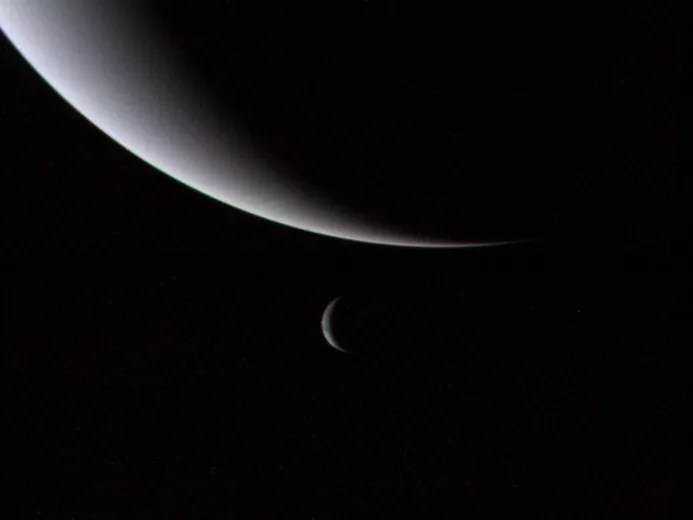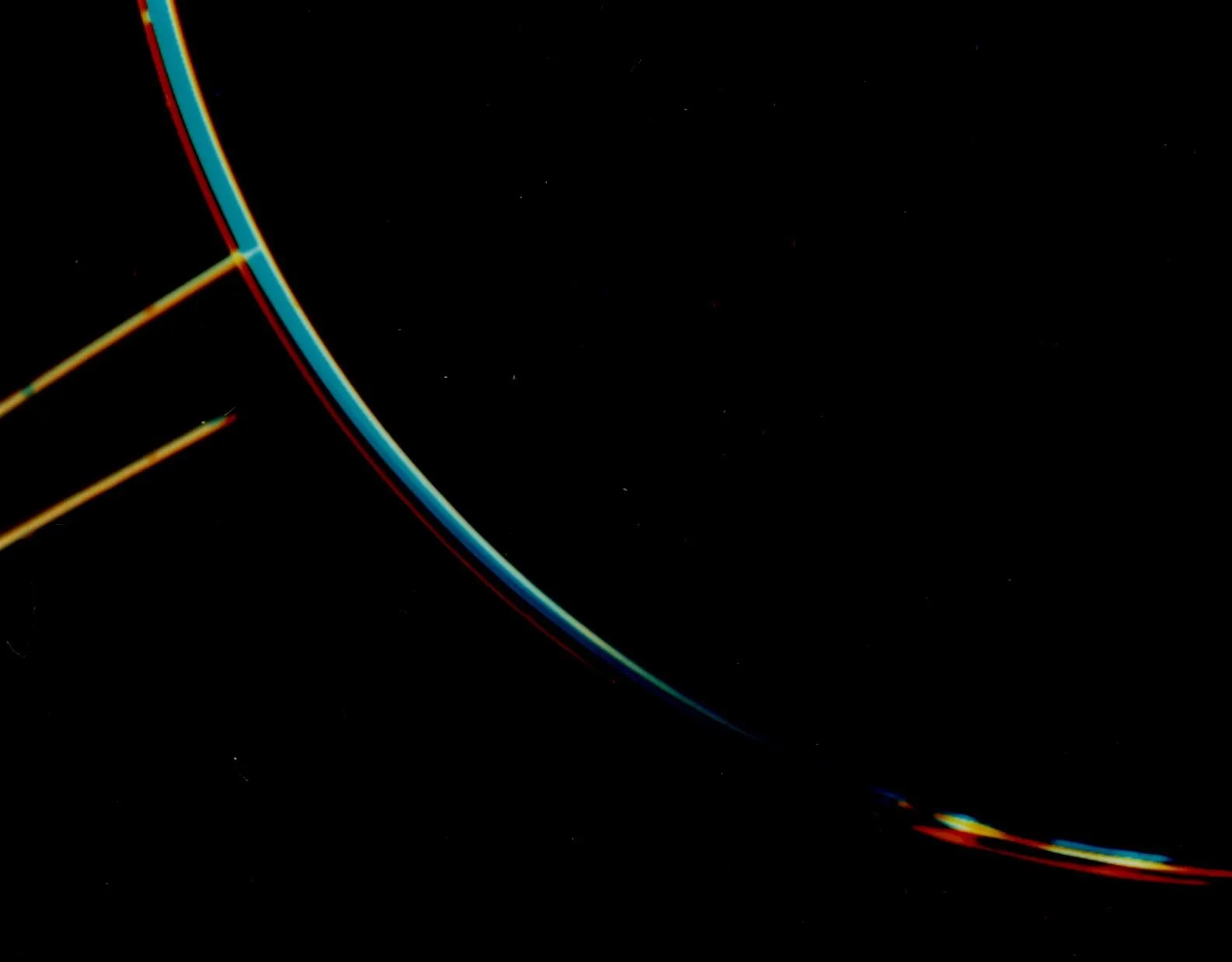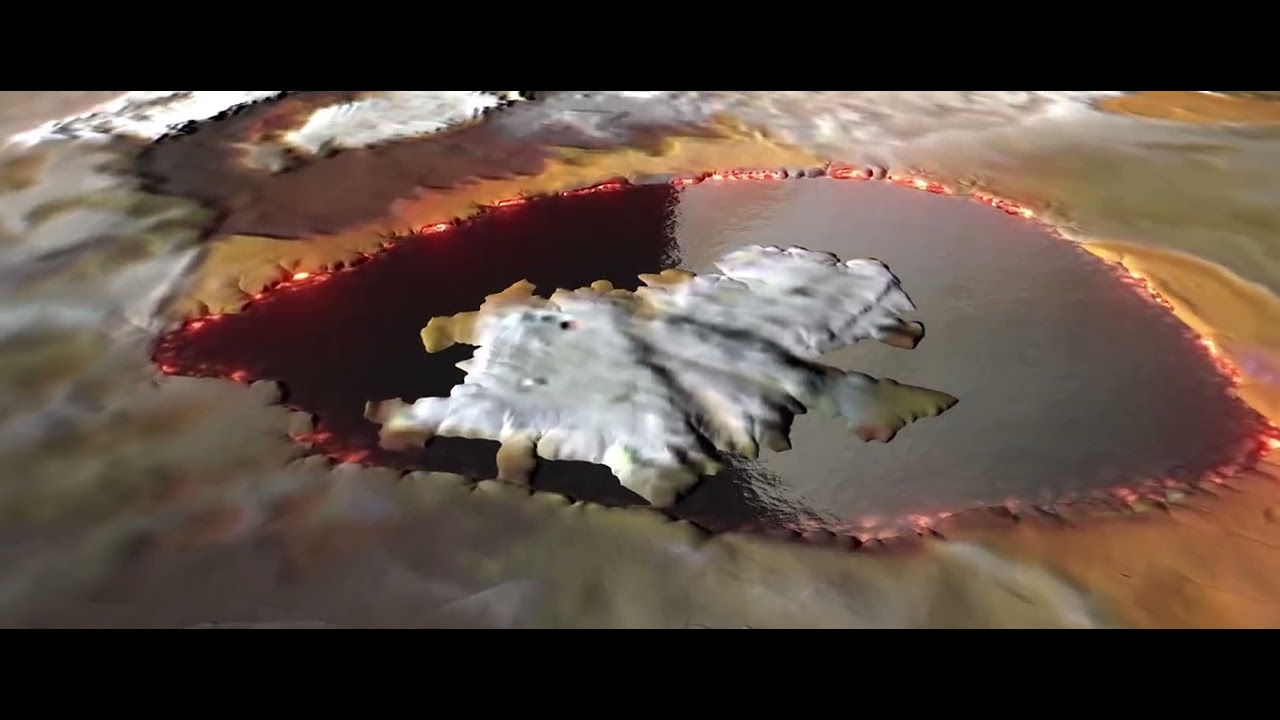4 min read

Almost every day, NASA receives a message from a spacecraft more than 10.6 billion miles (about 17 billion km) away. At that unimaginable distance, it takes the radio signal almost 16 hours to arrive. The spacecraft is Voyager 2, which launched 40 years ago this month. It's still operating, sending back dispatches from the dark reaches well beyond the orbit of Pluto. Even now, scientists are still actively exploring the outer boundaries of the solar system using Voyager 2, decades after its "Grand Tour" of the giant planets Jupiter, Saturn, Uranus and Neptune revealed their splendors like never before. This week, we recall 10 highlights from one of the most epic voyages in human history.
1. A Journey of 10 billion miles begins with the first step. Voyager 2 set out from Earth on Aug. 20, 1977. Even though it launched before its twin spacecraft, Voyager 1, it carried the '2' moniker because mission planners knew its trajectory would bring it to Jupiter after Voyager 1's arrival there.
2. The Grand Tour. Voyager 2's trajectory was special because it took advantage of a rare orbital alignment to fly by all four gas giant planets: Jupiter, Saturn, Uranus and Neptune. It was the first, and so far the only, spacecraft to carry out a close-up reconnaissance of Uranus and Neptune.
3. Not-so-gentle giant. Voyager 2 flew by Jupiter in April 1979, capturing striking images of the planet's volcanic moon Io and its violent storms larger than the entire Earth.
4. Saturn's not the only one. Jupiter has its own ring system, and Voyager 2 provided the first pictures.

5. An ocean under ice. During its Jupiter encounter, Voyager 2 obtained close-up looks at Jupiter's moon Europa, including linear cracks and other features which first led scientists to realize Europa probably hides a vast sea of liquid water beneath an icy shell, the first known world outside Earth that could have an ocean.
6. Ringworld, the prequel. Voyager 2 zoomed through the Saturn system in August 1981. It saw hints of mysterious features that the Cassini mission would later reveal in stunning detail, including Enceladus, with its bright surface that suggested geologic activity, and Saturn's intriguing hexagonal jet stream.
7. Swiftly by a tilted planet. In January 1984, Voyager offered humanity its first detailed look at the seventh planet, Uranus, the only one tilted on its side relative to the Sun. Voyager images revealed 11 new moons, including Juliet, Puck, Cressida, Rosalind and Ophelia. The moon Miranda presented a bizarre landscape that left scientists debating its origins for years. Voyager also captured views of the planet's lacy rings, and found that it is the coldest in the solar system, at minus 353 degrees Fahrenheit (59 Kelvin).
8. In Neptune's blue realm. After picking up a gravitational speed boost at each previous planetary encounter, by the time Voyager reached Neptune it shot through the entire system of Neptunian rings and moons in a matter of hours. Voyager saw a titanic storm in Neptune's windy atmosphere, discovered new moons, and revealed active geysers erupting on Triton's frigid surface.
9. Postcards from the edge. Although their cameras are no longer functioning, other key scientific instruments on board both Voyager spacecraft are still collecting data. Voyager 1 is exploring the boundary between the Sun's realm and interstellar space. Voyager 2 hasn't traveled quite as far. In September 2007, it crossed the termination shock (where the speed of the solar wind of charged particles drops below the speed of sound) at a point about 84 Astronomical Units from the Sun (more than twice the distance to Pluto). See https://go.nasa.gov/2uwrndb
10. Ride along. Voyager's mission is far from over. Engineers estimate the spacecraft will have enough power to operate into the mid-2020s. You can ride along at www.jpl.nasa.gov/voyager, or by following @NASAVoyager on Twitter and by downloading NASA's free 3-D space simulation software, Eyes on the Solar System at eyes.nasa.gov.
One more thing: Inspired by the messages of goodwill carried on Voyager's Golden Record, you're invited to send a short, uplifting message to Voyager and all that lies beyond it via social media. With input from the Voyager team and a public vote, one of these messages will be selected for NASA to beam into interstellar space on Sept. 5, 2017—the 40th anniversary of Voyager 1's launch. Post your message on social media with the tag #MessageToVoyager by Aug 15. Details: www.jpl.nasa.gov/voyager/message/







